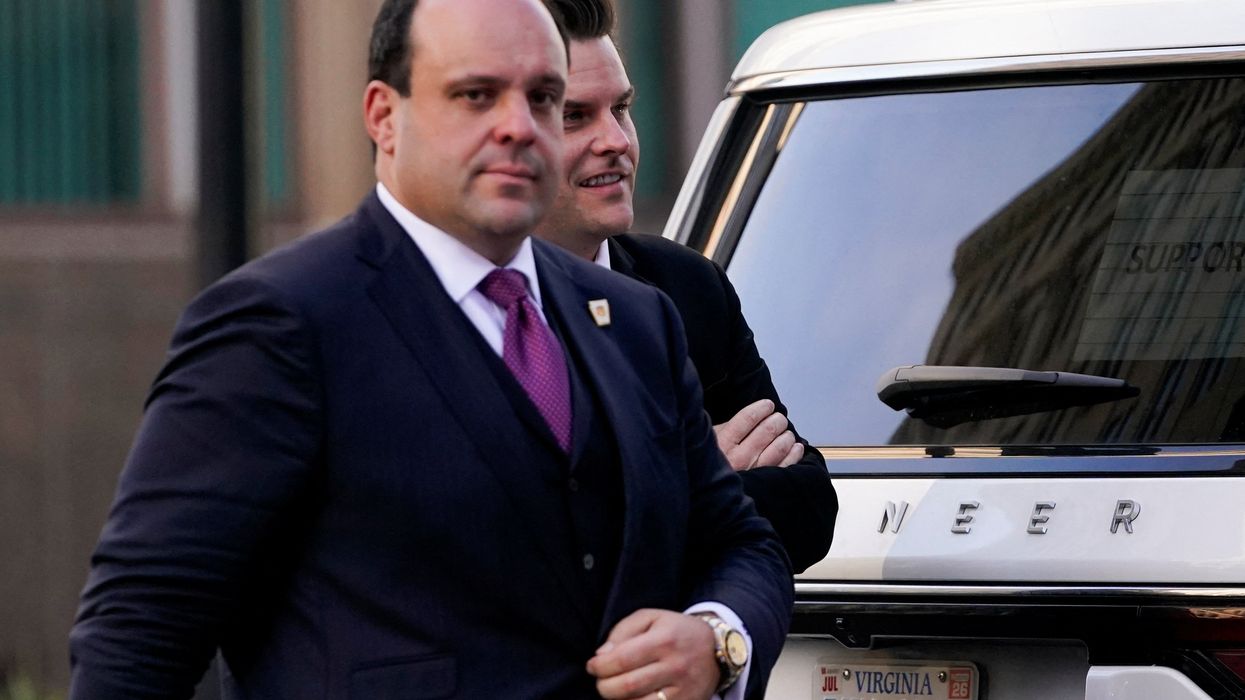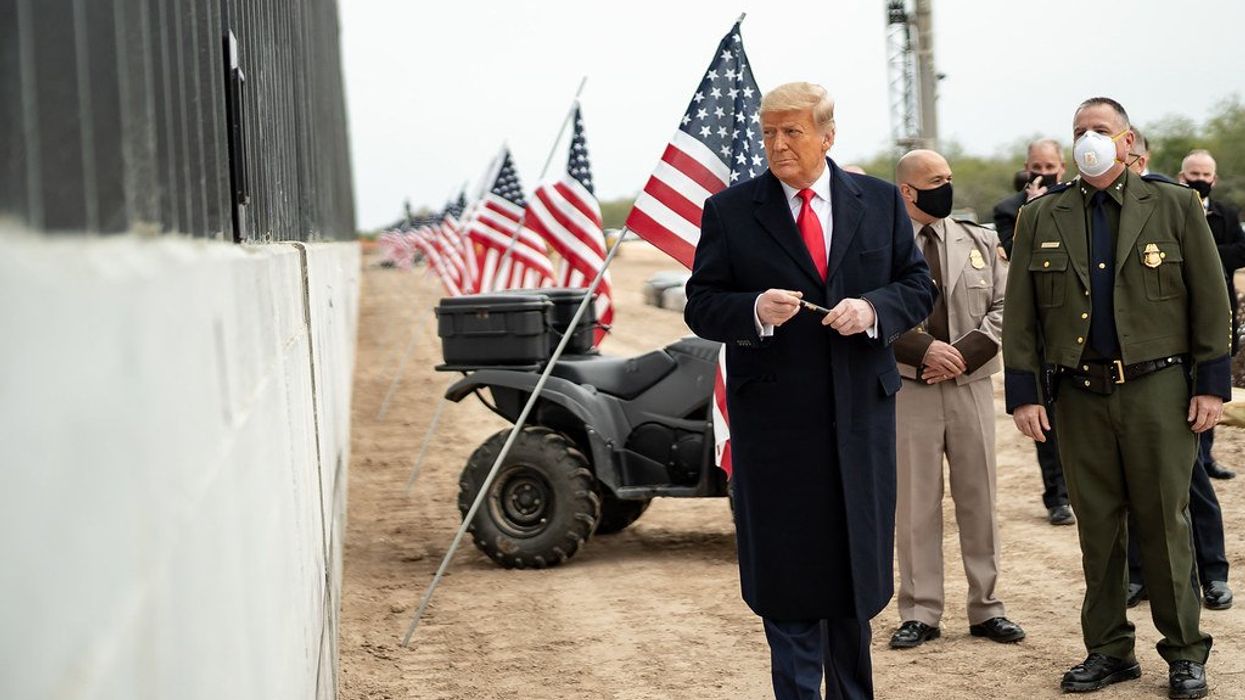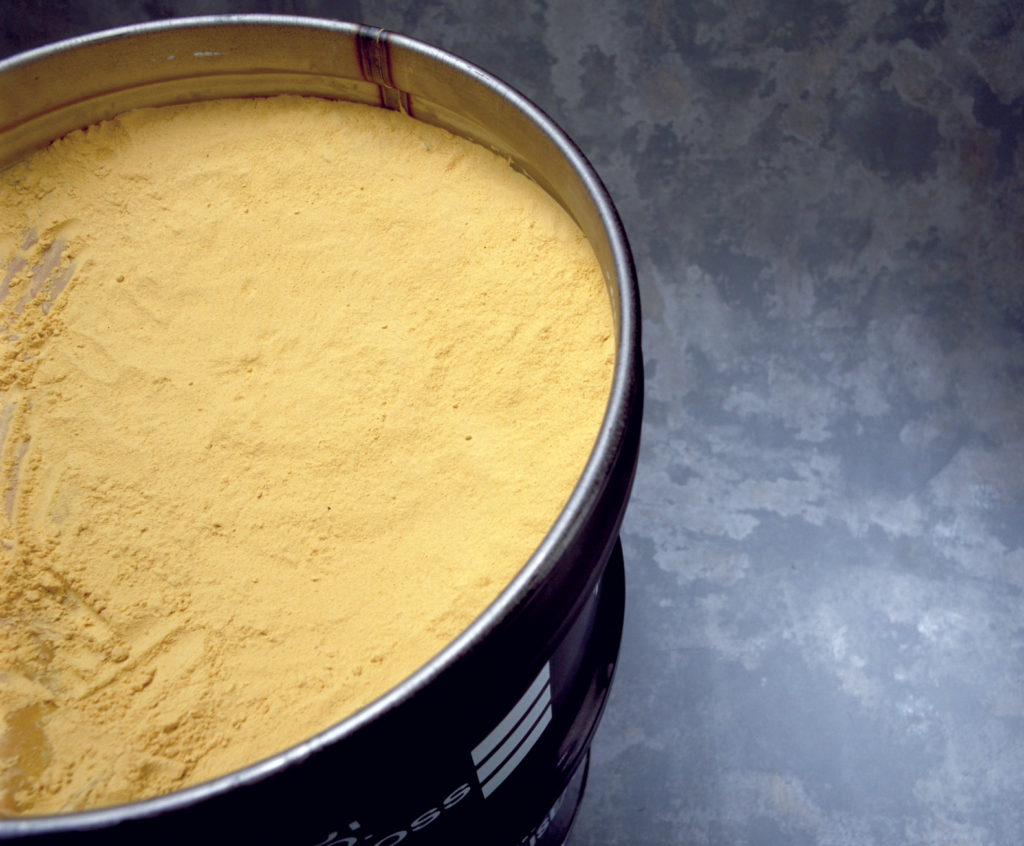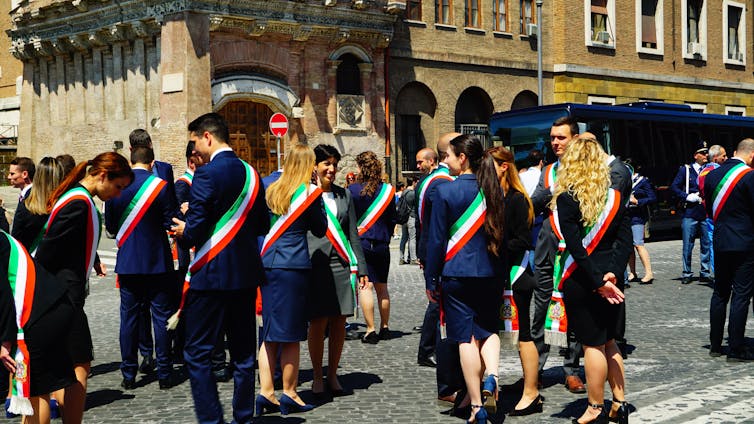“A Time Before Fear”: Notes From a Black Panther Who Spent 41 Years Behind Bars
Russell Shoatz’s posthumously published autobiography documents a lifetime of fighting for Black liberation.
By Kanya D’Almeida & Russell Shoatz ,
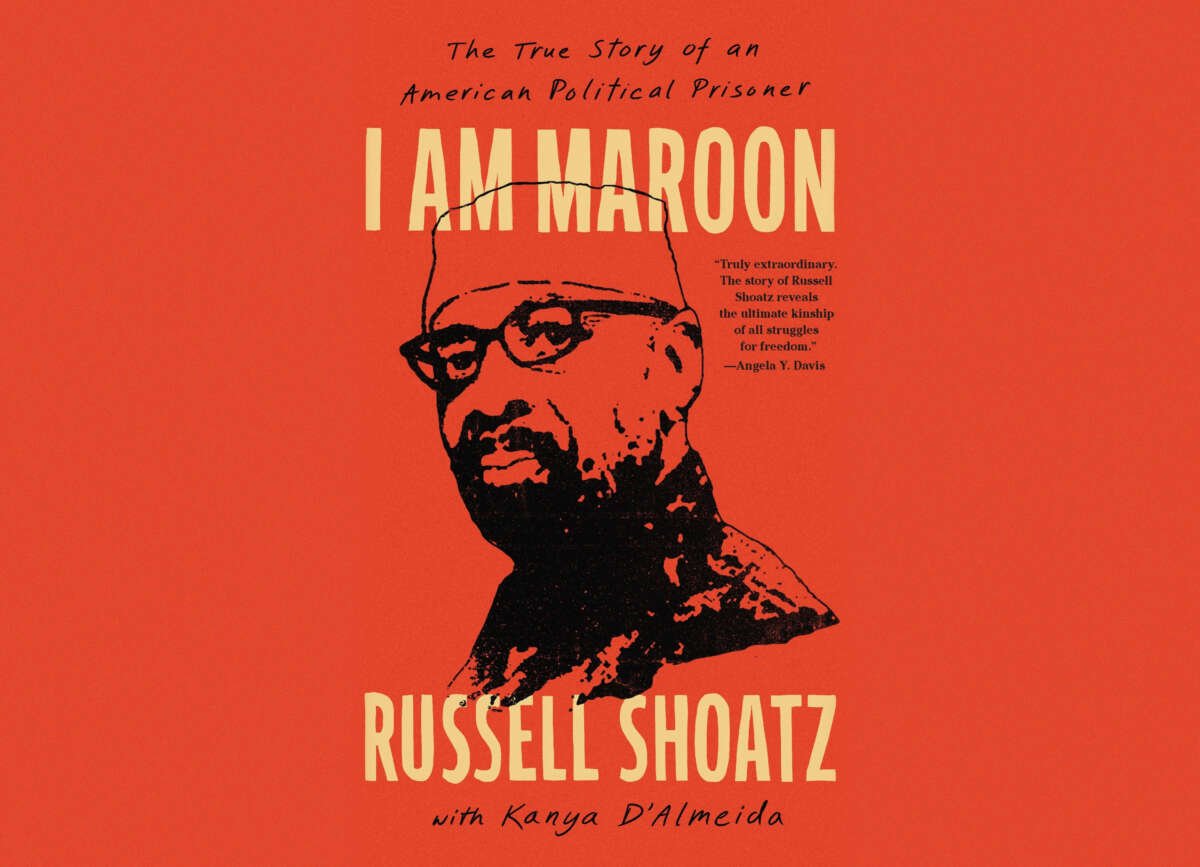
Among those familiar with his life story, the name Russell “Maroon” Shoatz is synonymous with freedom.
His childhood and early adulthood were spent on the streets of Philadelphia, where he transformed himself from a gang member into a dedicated community organizer at the height of the city’s struggle for Black liberation.
Arrested in connection with an attack on a park guard in Philly’s Fairmount Park in 1970, he spent two years underground with various chapters of the Black Panther Party until he was arrested and sentenced to life in prison.
For four decades he served time in one penitentiary after another across the state of Pennsylvania. He earned the title “Maroon” after escaping from two of these prisons. The title — a revered honorific among Black freedom fighters — draws upon the long history of Black and Indigenous slaves breaking free from plantations to form autonomous, liberated zones across the Americas and the Caribbean.
Following his second and final recapture, Maroon began a period of deep self-study, which rapidly drew in scores of other politically conscious prisoners dedicated to organizing and uplifting themselves in the face of institutional racism and brutality. Incensed by his success at mobilizing his fellow prisoners, the Pennsylvania Department of Corrections threw him in solitary confinement. He survived nearly 22 years of no-touch torture before finally winning his release into the general prison population in 2015.
Related Story
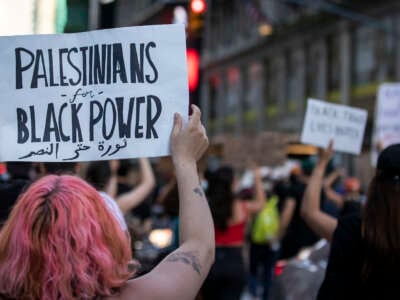
Interview |
What Can the Black Freedom Struggle and Palestinian Liberation Teach Each Other?
“Solidarity is a rejection of a depoliticized pessimism, a pessimism engulfed by one’s suffering,” says Zahi Zalloua. By George Yancy , Truthout September 8, 2024
His first book, a collection of essays entitled Maroon the Implacable, charts his political evolution from a mere “foot solider” in the Black Liberation Army to a sharp theoretician on matters of economics, armed conflicts and ecosocialism.
His recently published autobiography — the result of a 10-year collaboration with me (Sri Lankan journalist Kanya D’Almeida) — tells a different story: not the history of the Panthers, or even of the Maroons, but of a young boy’s journey from city streets to the depths of incarceration. This memoir is the story of how a person goes from being a freedom fighter, to an escaped prisoner, to a free man; a story of finding freedom in confinement and isolation; and a blueprint for how to get — and stay — free.
Shoatz died in December 2021, two months after he was granted compassionate release from prison after 41 years behind bars. The following is an excerpt from his posthumously published memoir, I Am Maroon: The True Story of an American Political Prisoner (Copyright © 2024), which we brought into being together. It is available from Bold Type Books, an imprint of Hachette Book Group, Inc.
When We Were Free
By Russell Shoatz
Before he was assassinated in the Audubon Ballroom in Harlem in 1965, Malcolm X warned of a global race war. He did not hesitate to name the cause of the prevailing situation: a long history of white racism, colonialism, and empire, against which the colored minorities of the world were now rising. He described America as a powder keg, and her Black population as the fuse capable of lighting the explosive substance within and pretty much setting the whole damn world on fire. He prophesied a total revolution — not a polite tussle over “civil rights” but a full-blown battle for the basis of emancipation, which is to say, for land.
Long before most Black people got on board with his message, the federal government took Malcolm X’s words to heart. Under the leadership of J. Edgar Hoover, the FBI began to systematically search for and catalog the most capable individuals and organizations dedicated to Black liberation in America. Not for a minute did the agency underestimate the threat posed by dedicated and disciplined groups of Black freedom fighters and their white comrades. The bureau’s archives, which have now largely been made public, include everything from training manuals to correspondence to propaganda materials created by these groups.
The Black Panthers accounted for the FBI’s largest file and was the target of the bulk of the agency’s efforts and resources, including informants, detectives, spies, and a range of other undercover agents and operatives. To this day I believe this was due to the party’s clarity of vision. They had a thorough grasp of capitalism and fascism that came from a lived experience of Blackness, and that enabled them to reach and unify masses of people who had previously been lost, apathetic, or afraid.
When I and other BUC [Black Unity Council] members first visited the Panther offices located on Nineteenth and Columbia Avenue in North Philadelphia, we were largely ignorant of the level of government surveillance of their activities. It was only gradually, as our link with the party deepened, that we would come to understand the lengths to which the state was prepared to go to not only eviscerate the Panthers, but bury all trace of them forever. It was only after we had joined forces with the BPP [Black Panther Party] that we came to fully comprehend what it meant to be blacklisted by the United States government, and to feel the deadly weight of its so-called national security apparatus.
Our first point of contact, in the year 1969, was a dude named Mitch Edwards, a defense captain of the party’s chapter in Philly. He must have been close to my age, mid-twenties, and he was responsible for training and leading a platoon of teenaged Panthers stationed at several offices throughout the city. Given the Black Unity Council’s status as a prominent and respected local group, that initial meeting was one of equals. However, it quickly became clear that the Panthers had a whole lot going for them that was beyond our scope or ability.
For a start, they were a national organization. They had a newspaper, a tool the BUC had never even considered, which allowed them to educate a much wider audience on their programs and ideas. Most crucially they had a fully functional free breakfast program for kids, which earned them tremendous goodwill in the neighborhoods and also served as a model for a community-based form of independent government.
As far as we were concerned, the Panthers had one weakness: They had not dedicated sufficient time and resources to developing a comprehensive military strategy, which forced them to suffer humiliating defeats and unnecessary casualties at the hands of the police. In December 1969, Chicago police officers staged a raid on the party’s headquarters, killing Fred Hampton, the 21-year-old chairman of the Illinois chapter of the BPP, and 22-year-old Mark Clark, an active party member. Police also severely wounded several others, including a female Panther who was in the advanced stages of a pregnancy. We watched this news with growing frustration that the party’s top leadership wasn’t willing to take the steps necessary to protect their own cadres from death and incarceration.
Then, in a sudden but welcome change of direction, Huey P. Newton issued the following directive: “Our organization has received serious threats . . . We draw the line at the threshold of our doors. It is therefore mandated as a general order to all members of the Black Panther Party for Self-Defense that all members must acquire the technical equipment to defend their homes . . . Any member of the Party having such technical equipment who fails to defend his threshold shall be expelled from the Party for Life.”
Now we were on the same page! This newly stated position, combined with the dissemination of official Panther pamphlets entitled “Forming Self-Defense Groups,” was the green light for many members of the BUC to give themselves wholly to the Panthers’ cause. These pamphlets served as a set of uniform guidelines for rank-and-file Panthers to recruit, organize, and train thousands of grassroots community volunteers into militias that would serve the Black community. It was exactly the kind of program the BUC had undertaken a couple of years earlier, but on a massive, nationwide scale. This change of direction was sufficient to put us completely in the service of the Black Panther Party.
We began to sell the Panther newspapers and help out with their breakfast program. We flocked to their political education, or PE, classes. It was expected that BUC members would not only attend all Panther rallies, but in many cases provide the necessary security during these functions, a task we were only too happy to fulfill despite the repeated objections of our female members. What we saw as the party’s genuine concern over police repression and surveillance, Asani and the other women in the BUC called “Panther Paranoia.” They believed many of the male leaders and activists were prone to hysteria, often jumping to conclusions or overreacting to perceived security threats.
One evening I was on duty at a political discussion when a couple of unidentified vehicles began circling the neighborhood. When we decided we needed some heavier artillery, I was sent home to pick up shotguns, rifles, and one of my metal ammunition carriers. It was dark when I got to our place, and Asani was alone with the kids. She tried to stop me from leaving, first with verbal pleas and finally by physically blocking my path. When I went to get around her, she grabbed a hold of the shotgun I had in one hand. She had fire in her eyes! She told me to stop acting crazy, to call off the discussion for the time being and reconvene when things had cooled down. It was a struggle to wrench the gun away from her, and as I turned my back on her and the kids, I realized that the question of armed struggle was becoming more than a disagreement — it was widening into a gulf, eating away at the complete trust and honesty that had once existed between us.
But there was no stopping the train. The city had caught the revolution virus and it was spreading to the most unlikely people and places. Up in North Philly, a priest named Father Paul Washington opened the doors of his Church of the Advocate for various Panther activities, and we packed the pews with local supporters whenever a Panther Central Committee member was in town to give a talk. Panther offices had sprung up all over: on Nineteenth and Columbia, Twenty-Nineth and Susquehanna Avenue; at Thirty-Sixth and Wallace Street; at Forty-Seventh and Walnut. There was also a facility in Germantown, and others would eventually find spaces in West and South Philly. A handful of loyal party members ran these operations, capable and dedicated men and women who, it seemed, worked round the clock in the service of the movement.
The first Panther activity that I participated in was a mass rally in front of the State Office Building on North Broad Street in support of a nationwide effort to win the release of Huey P. Newton. He had been arrested in 1967 in connection with the murder of an Oakland police officer named John Frey, and a huge coalition of Black and white liberation groups had been demanding his freedom. The words “Free Huey!” had become a kind of rallying cry for the whole movement, and these protests generally drew hundreds or even thousands of people. Mitch Edwards led the Philadelphia rally — we marched around the building, listened to speeches, and sang liberation songs.
Shortly after that, I drove a bunch of Panthers and Black Unity Council members to New York City to attend a similar rally demanding the release of the Panther 21 — the largest single group of Black Panthers imprisoned anywhere in the country. These New York–based Panthers stood accused of coordinating a major attack on two police stations in New York City. Their arrest represented just the tip of the iceberg of the government’s attempts to neutralize Black revolutionaries. The Panther Party leadership at the time devised the ingenious tactic of turning their members’ legal trials into high-profile media spectacles. This effectively transformed any arrested or detained Panthers into living martyrs, people who had sacrificed their freedom for the cause. It put the authorities in a terrible dilemma because it turned their own weapon—the courts and the courthouses — against them! They were trapped between the options of releasing revolutionaries back into the community or dealing with a torrent of negative publicity around these controversial trials, including in the international press.
When we arrived in the city for the Panther 21 trial, we assembled at the courthouse in downtown Manhattan alongside hundreds of protesters. As we marched we sang, and the song went something like this:
Free the twenty-one! Free the twenty-one, you fascist pigs! Free the twenty-one, we need our warriors beside us!
Uniformed New York City policemen, mounted on horseback, followed us around the block. We listened to a speech by Don Cox, the West Coast field marshal for the Black Panthers, who was at that time probably the third or fourth in command of the entire party.
But rallies were just one square on the chessboard. Before too long, the local Panther cadre in Philadelphia had informed their West Coast leadership about the Black Unity Council’s hardcore training in self-defense. Shortly thereafter, we received a request to share our military hardware with the top brass of the Panther Party.
Until then, we had been laboring under the impression that the Panthers, being a coordinated national movement, possessed their own arsenal. To learn that a small local outfit like the BUC could be called upon to beef up their supplies was a serious wake-up call to guys like me and Sharp. But we quickly shook off our disappointment and put out a call among our female membership for a volunteer to transport a number of hand grenades in her personal luggage on a flight to California — a task she undertook despite the women’s opposition to our armed activities, and with hardly any fanfare for her courage.
It was, in a way, a time before fear. We were audacious. We did not ask if something could be done; we asked only what needed to be done.
Because that’s how it was back then. It was a time of doing, a time of sacrifice. It was, in a way, a time before fear. We were audacious. We did not ask if something could be done; we asked only what needed to be done. There were no limits to our demands because we were demanding things first and foremost from ourselves. No more holding a begging bowl out to our oppressors. Instead, we had identified the needs of our people and drafted the terms and conditions under which we would struggle for them. The Panther Party’s training manuals included strict instructions on how to transform from civilians into soldiers: rise early, develop physical strength, discipline our minds and bodies. Every day was boot camp, right there in the heart of the city, in broad daylight. It was a time of regimented militancy, but you could also say it was the time when we were most free.
Panthers were hijacking planes to foreign countries where they could seek asylum, mainly Cuba but also a few with sympathetic governments in Africa, including Algeria and Tanzania. By this time Eldridge Cleaver had established a kind of Black Panther government-in-exile in Algiers, and he personally received those who managed to escape death and incarceration on American shores.
As for the authorities, the only thing worse in their minds than the flight of wanted Panthers was the exodus of white people into the arms of revolutionary formations.
Groups like the Weather Underground, whose membership was entirely white, became a thorn in the side of the establishment, undertaking some of the most daring attacks on the state and even breaking their members out of jail. On college and university campuses things were reaching a fevered pitch, spurred on by students who were opposed to the outmoded, authoritarian, and racist school administrators. This, coupled with vehement anti–Vietnam War sentiment among the student body, brought white, Black, Latino, and Asian students together in huge numbers to demand sweeping changes in the education system. They clamored for a dismantling of the old colonial curriculum, to be replaced with programs that taught them the true histories of their own people: Black studies, Latino studies, Native American studies, Asian studies. In all of these movements, it was Black students who led their peers into the most militant forms of protest, occupying buildings or organizing sit-ins until their demands were met. Sometimes these actions turned violent, with students taking up arms in self-defense, and that was big news because people felt that if privileged college and university students were resorting to such extreme measures, it meant unrest had reached new heights. Panicked authorities called in the pigs and turned their campuses into active shooting galleries, riot police versus unarmed students. But of course it was the massacre of four white students by the National Guard at Kent State University in Ohio that stole most of the headlines.
By now the notion that we were embroiled in a full-scale conflict was no longer in dispute. This awakening, the awareness of ourselves as combatants against a hostile government, connected us to much larger, and much deadlier, armed uprisings around the world. For some years Huey P. Newton and Bobby Seale had been reproducing and distributing the writings of the Chinese revolutionary Mao Tse-tung, who taught us that “political power grows from the barrel of a gun.” For many of us it was a new sensation to learn that Black people’s quest for emancipation in the United States bore such a strong resemblance to the plight of brown and yellow people around the world, many of whom believed that the oppressed must turn to guerrilla warfare to win their freedom. We familiarized ourselves with the works of the Afro-Caribbean revolutionary Frantz Fanon and the Argentine-Cuban guerrilla leader Che Guevara. We read Marcus Garvey and Ho Chi Minh.
In 1967, Muhammad Ali famously answered a young white reporter’s questions on his draft refusal by saying: “If I’m going to die, I’ll die right here fighting you. You my enemy, not Viet Congs or Chinese or Japanese. You my opposer when I want freedom, you my opposer when I want justice, you my opposer when I want equality. Want me to go somewhere and fight for you? You won’t even stand up for me right here in America.”
A couple of years later another Black man made headlines for taking an equally bold stand. But he would pay for it with his life.
Jonathan Jackson was only 17 years old when he stormed the Marin County Courthouse in California with several semiautomatic weapons. He proceeded to free three Black prisoners from San Quentin prison, one of whom was standing trial while the two others had been brought as witnesses. Together, the four young men took a white judge, prosecutor, and three jurors hostage, demanding, in exchange for their release, freedom for the famous Soledad Brothers. This was a group of Black prisoners including Jonathan’s brother, George Jackson, who would soon be facing trial for the killing of a white guard at San Quentin prison — a charge that all three accused denied. During the courthouse raid, neither Jonathan nor any of his accomplices fired a single shot from any of their weapons. They used piano wire to bind their hostages, and verbal commands to usher them from the courtroom. When they were accosted by a bevy of newspaper reporters and cameramen on the courthouse steps, Jackson and the three men he’d liberated allowed themselves to be photographed, while reiterating their demand for freedom for the Soledad Brothers. Finally they bundled their hostages into an escape van destined for a nearby radio station, where they intended to transmit their message to a national audience. The whole thing was a brilliantly maneuvered, bloodless operation — until local police fired on the van, killing Jackson, two of the prisoners he had liberated from the courthouse, and the white judge.
When I walked into a friend’s house that evening and saw the pictures from that courthouse splashed across the front page of the newspapers, I froze. I couldn’t take my eyes off the image of Jonathan Jackson, assault rifle in one hand, disarming cowing sheriffs, while in the background the three liberated Black prisoners stood guard over their bewildered-looking captives. Before I could even pick up the paper to read the whole story, I began to cry. I had seen Jonathan’s face in the papers many times before, always in connection with his brother George and their revolutionary ideas, but seeing him now as a martyr was a new sensation. It made me feel that we had a true leader, someone who was urging us through his own actions to intensify our struggle for liberation. It was not a feeling of sorrow — more of a renewed conviction that all three young men had died a glorious death, one that their oppressed kinfolk could not only understand, but actually envy.
I took the newspaper out to my car and sat alone for a while, trying to collect myself. But only one thought was flashing through my mind: The shit was on. All doubts, restraints, and equivocations were things of the past. Those of us who had committed to this fight were going all in to either win our freedom or perish in the attempt.
I wasn’t alone. In the coming days just about everyone I encountered seemed to be in a state of delirium, enthused, energized, and just plain ready. It felt like a huge wheel had been shifted from a rut, pushed with great difficulty to the edge of a slope, and was about to be sent rolling. Once it got going it would gather too much speed to stop, so we either had to keep up or get crushed beneath it. Pictures of Jonathan Jackson and the Marin County hostage crisis circulated far and wide: they were reproduced in the Panther papers, and penetrated every home in America through television screens.
They also set in motion a train of events that would culminate in the August 29, 1970, attack on the Philadelphia Fairmount Park Guard Station.
I will not jeopardize any party’s freedom or safety by revealing what I know about that attack, but I must state for the record that it was carried out in accord with, and at the behest of, the leadership of the Black Panther Party. It was an attack that would cost me everything but my life; since that fateful summer day, I have been a fugitive and a prisoner for 47 years and counting.
Note: This article has been excerpted from "I Am Maroon: The True Story of an American Political Prisoner" by Russell Shoatz and Kanya D’Almeida. Copyright © 2024. Available from Bold Type Books, an imprint of Hachette Book Group, Inc.
Kanya D’Almeida
Kanya D’Almeida won the 2021 Commonwealth Short Story Prize, becoming the first Sri Lankan and only the second Asian writer to hold the honor. She was awarded the Society of Authors’ annual short story award in 2022. Her journalism has appeared in Al Jazeera, Truthout and The Margins, and her fiction has appeared in Granta. She holds an MFA from Columbia University, where she studied under Victor LaValle.
Russell Shoatz
Russell “Maroon” Shoatz was a dedicated community activist, founding member of the Black Unity Council, former member of the Black Panther Party and soldier in the Black Liberation Army.
.jpg)
